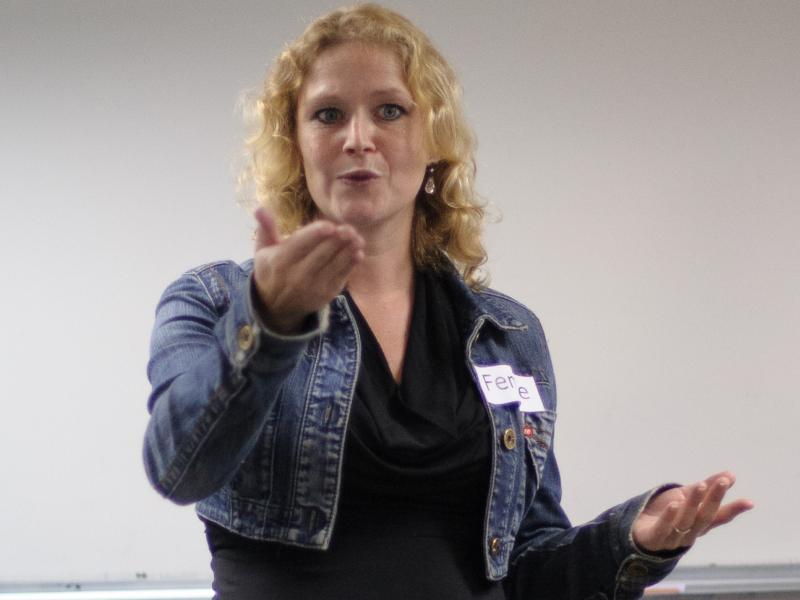9th April 2016
So you’re interested in becoming an English language teacher, but confused by the number of acronyms? You may be currently considering your choices in terms of TESOL study certifications, courses or future teaching goals – but is there a difference between TEFL and TESL? And what about TESOL certifications? And which one applies to the teaching you want to do in the places you want to go?
Which certification do I need: CELTA, ESL, TEFL, TESL or TESOL?
The world of English language teaching is full of acronyms. Luckily, they’re not so difficult to get your head around. However, the two key factors that differentiate courses are i) assessed and observed teaching practice, and ii) the number of contact hours.
First, let’s take a look at types of English language teaching:
TEFL stands for Teaching English as a Foreign Language. It was initially used to denote the type of teaching that might occur in a country where students don’t speak English regularly. For example, if you were to move to France as an English teacher, where the main language spoken is French, and people learn English so they can communicate when traveling abroad – then this would be considered TEFL.
TESL (or ESL) on the other hand refers to Teaching English as a Second Language. This traditionally refers to students who learn English because it is commonly spoken in their home country – for example in countries where English is widely spoken, or in situations where migrant families living in native English speaking communities have to learn English in order to work or go to school. TESL is considered different from TEFL because the students that are taught in these contexts have very different needs and motivations for learning the language.
In fact many people now refer to EAL – English as an additional language - because in many instances people aren’t learning English as a second language, but a third, fourth or fifth! It is even referred to as EALD by some people – English as an Additional Language or Dialect - in recognition of the fact that many people already speak a combination of languages and dialects by the time they start learning English.
Really? But does it make that much of a difference?
In practice no. TEFL and TESL are often used interchangeably – though they technically refer to different learning contexts. In countries like Australia which are popular destinations for both those who choose to take 6 months off work and live abroad to learn English (i.e. people taking TEFL courses abroad) and also have large communities of resettled immigrants and refugees (i.e. those studying TESL certifications in order to assimilate into a new country or culture), it can, at times be important to distinguish between the motivations and goals of these very different groups of students. However, for general purposes of choosing the right course to find your first English teaching job, the most common options for both types of teaching are the same.
Ok, so what is TESOL?
TESOL is an umbrella term that generally encompasses all other E-based acronyms in the world of English language teaching: TEFL, TESL, ELT etc. However, many people know of it in the context of the Trinity CertTESOL, or Certificate in Teaching English to Speakers of Other Languages, which is accredited by Trinity College London, and one of only 2 TESOL certifications accepted worldwide, and by the British Council (mainly due to the 6 hours of observed teaching practice included on the course).
The other widely-accepted certification is CELTA, or Certificate in English Language Teaching to Adults, which is one of two courses generally accepted worldwide as an appropriate entry-level qualification into English language teaching.
CELTA and the CertTESOL are considered equivalent qualifications – CELTA is accredited by Cambridge ESOL, while the CertTESOL is accredited by Trinity College London. Both the CertTESOL courses and CELTA prepare you to teach English language students in the same way: with a mixture of theoretical input form experienced tutors, coupled with an observed and assessed teaching practice (where you plan and deliver a total of 6 hours of lessons to real students, and receive feedback on your performance).
Both of these courses are suitable for TEFL, TESL, TESOL, EAP (English for Academic Purposes), ESP (English for Specific Purposes) or any other domain of English language teaching. And, importantly, both these courses place an emphasis on your ability to deliver in the classroom and reflect on your own teaching, and they provide feedback from experienced trainers helping you to become a more independent and resourceful teacher.
Now let’s see how much you remember with a quick quiz:
- What do the acronyms TESOL, TEFL and TESL stand for?
- What are the most widely accepted certifications for those who want to teach English language?
- What is the difference between CELTA and CertTESOL?
If you you're not quite ready to get a formal teaching qualification, the introductory module of English for Asia's CertTESOL course is now available as a standalone online course: the TESOL Starter course. This course will prepare you with the foundation knowledge required to confidently tackle a Trinity CertTESOL course. The HKD $1,200 starter course fee will be deducted from the Trinity CertTESOL course fee should you choose to study with EfA.



